April 20, 2015
Martha O'Kennon
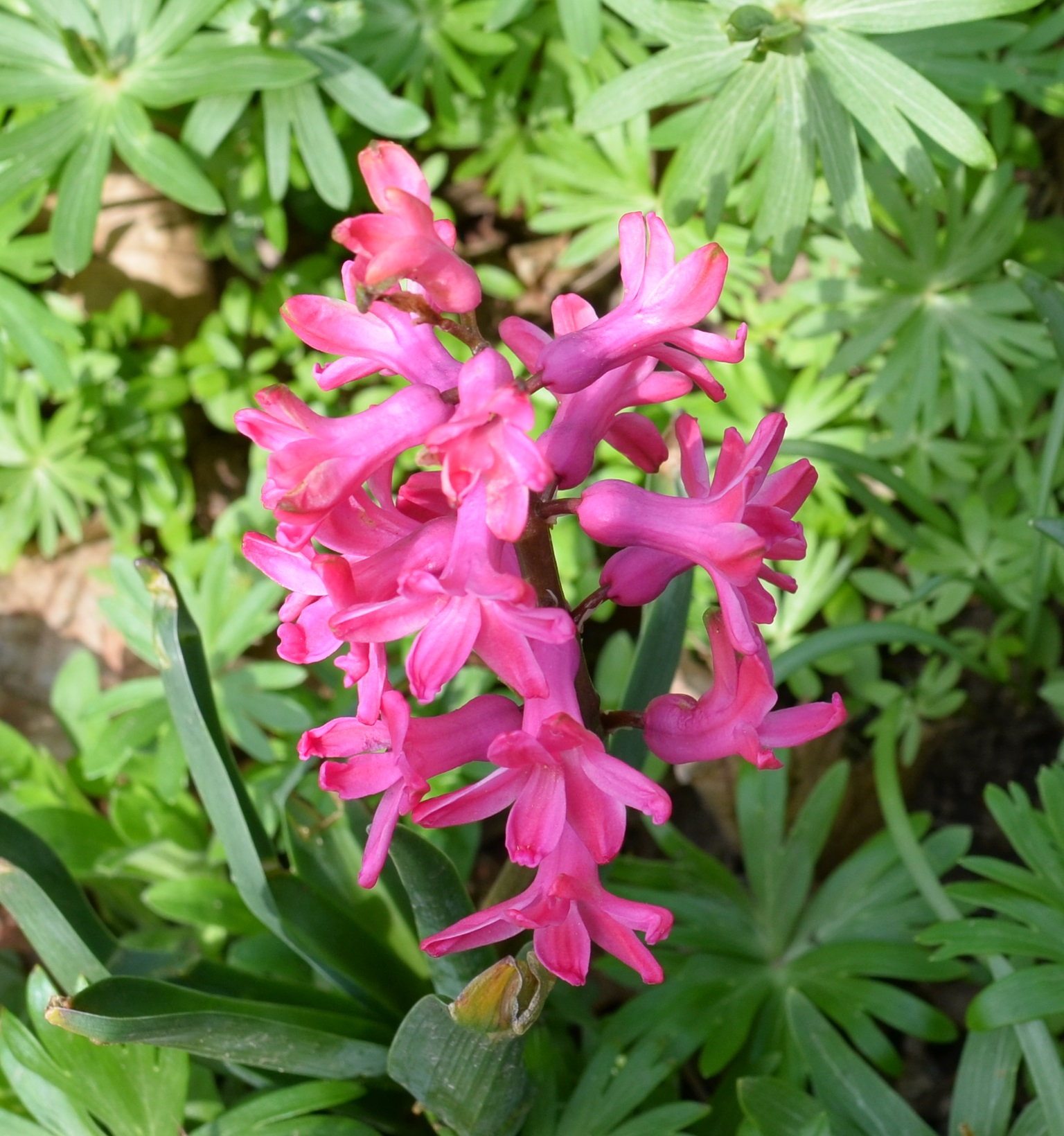
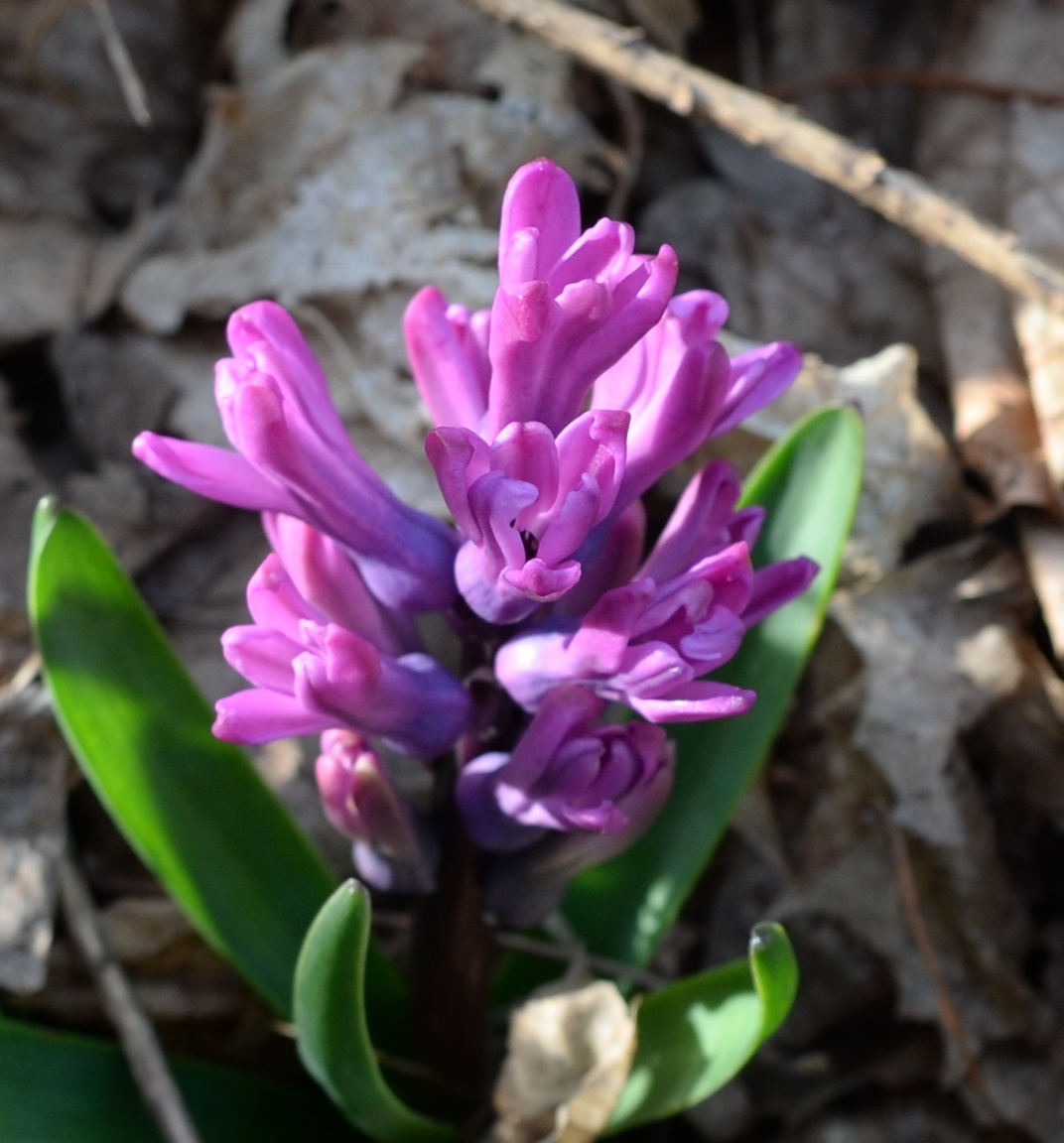
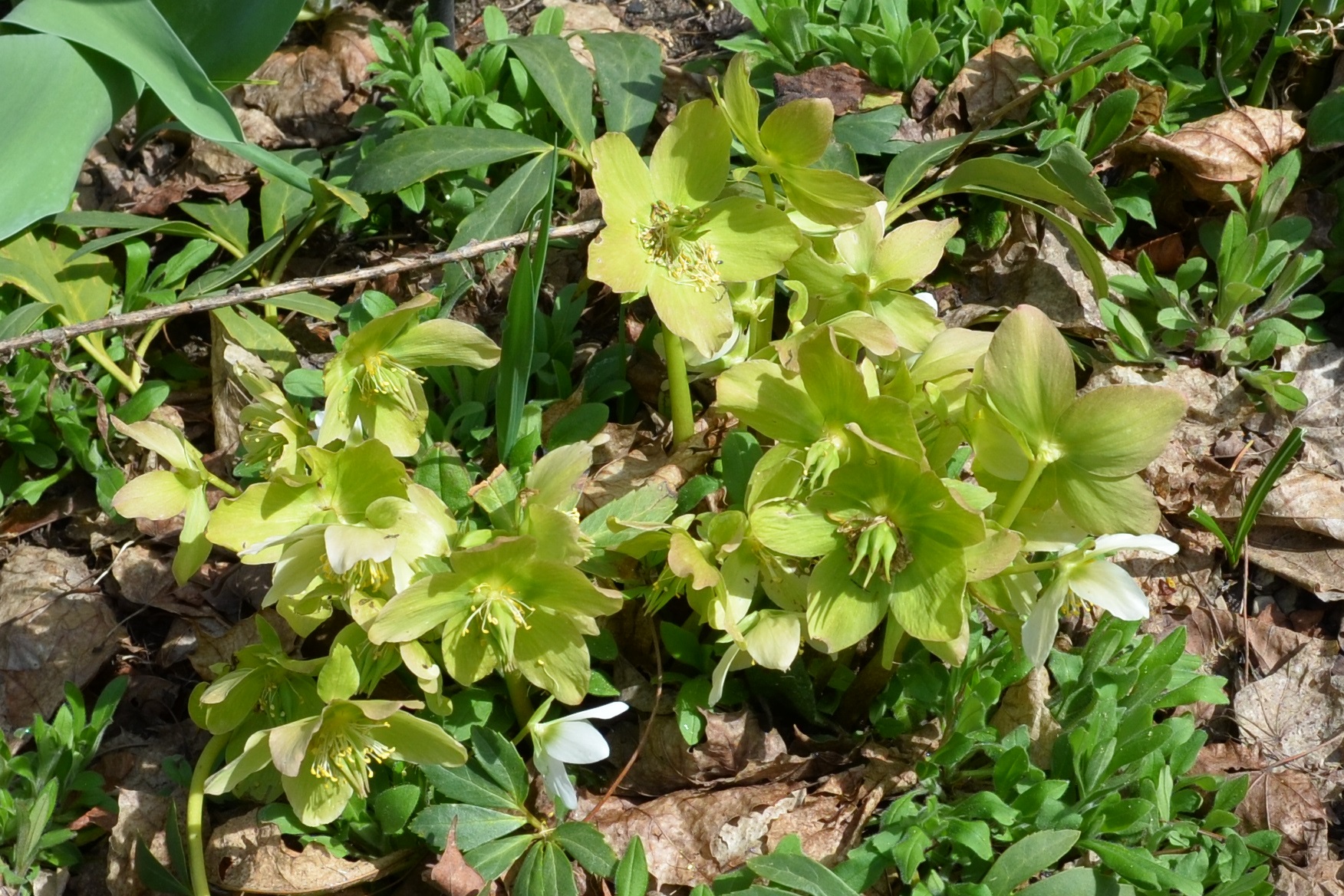 cin
cin
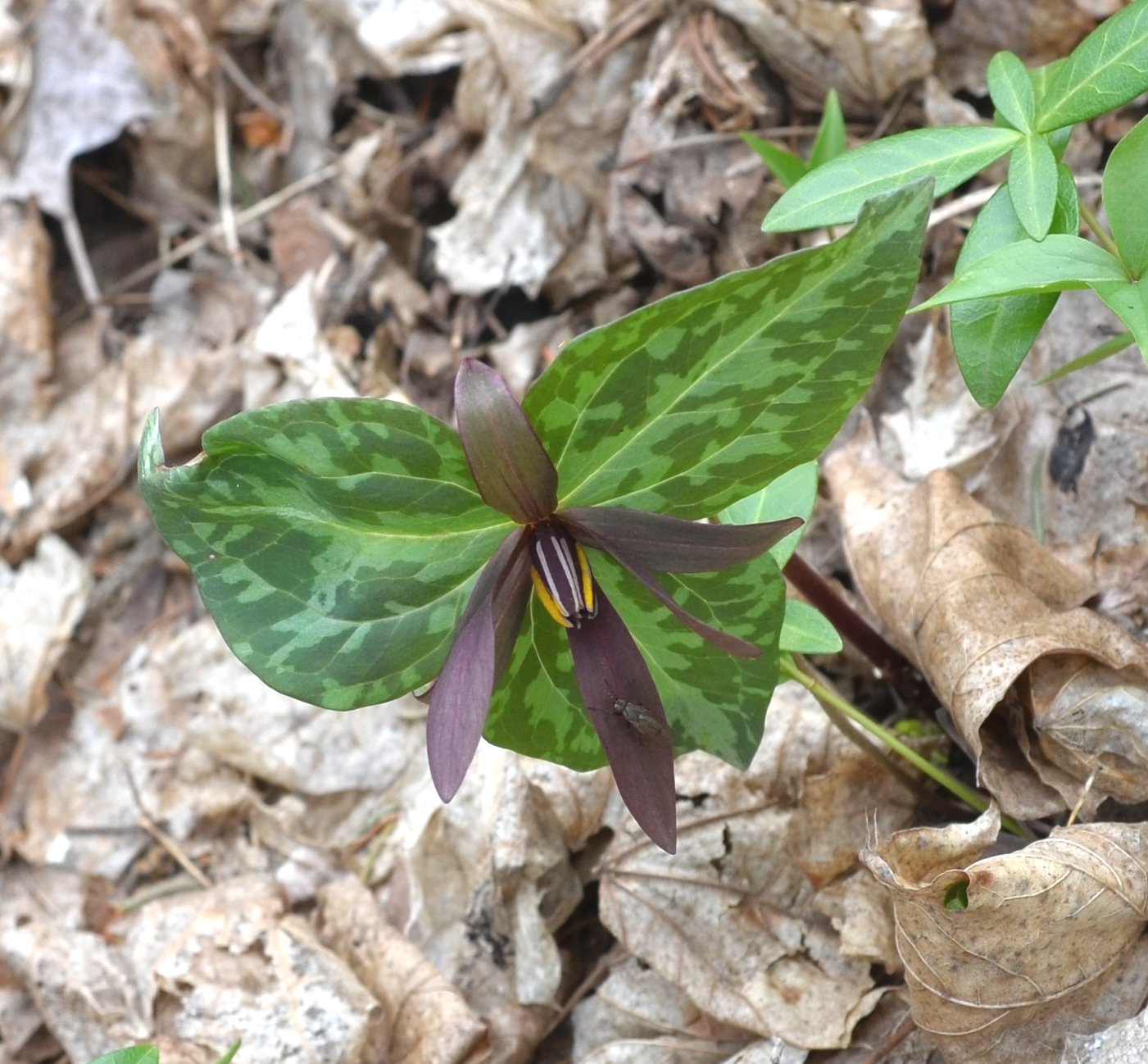
Spring continues! In the floral pictures above, note that the white hellebore, which bloomed on this page
last week, has now gone green, which is what they do as they age. The hyacinths are a bit sparse, but in groups are
lovely. And the red trillium (sessile, as
they are called when the flower doesn't rise from a stalk, but instead "sit" just on the center of the three leaves) has
gone and bloomed while I was out searching out more minute creatures.
More and more mystery creatures emerged from the woodwork. Here are some of the more mysterious.
The first two I thought were strange little ants. The red one turns out to be a Braconid wasp, a female no less, as you
can see if you notice the ovipositor (the little egg-laying twig that comes out the back end), which I didn't! And the
next one, which I thought was a little black ant with wings, which ants do have at this time of year to go off and make new colonies,
was instead a Diapriid, which is another kind of Braconid. The next was a real puzzle, but the people at Bugguide.net diagonosed it
as one of several other kinds of Braconids. (I thought it might be a kind of fly or bee.)
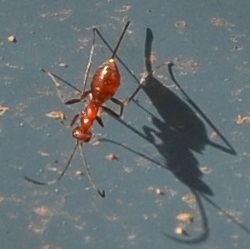
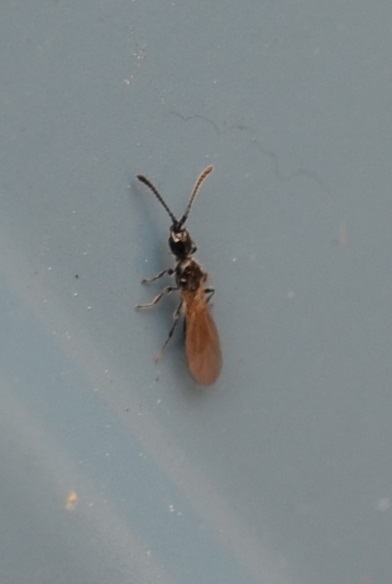
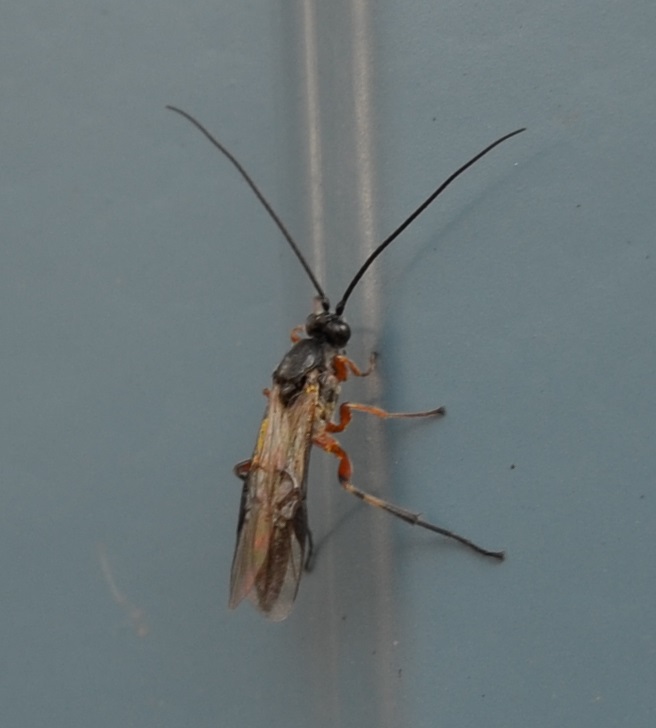
If you thought that was the end of my identification woes, this next one seems to be related to the last one above, but may in
fact be a female, as I think there is a very short bit of ovipositor showing. The next one I got! It is called a lacewing, and
in the flash of the camera does look very lacy. I imagined that the last one was just another lacewing trying to open its wings,
but I think I am going to send it in as now everything looks like a Braconid to me, and yesterday I had never heard of them!
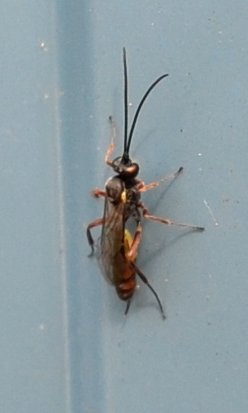
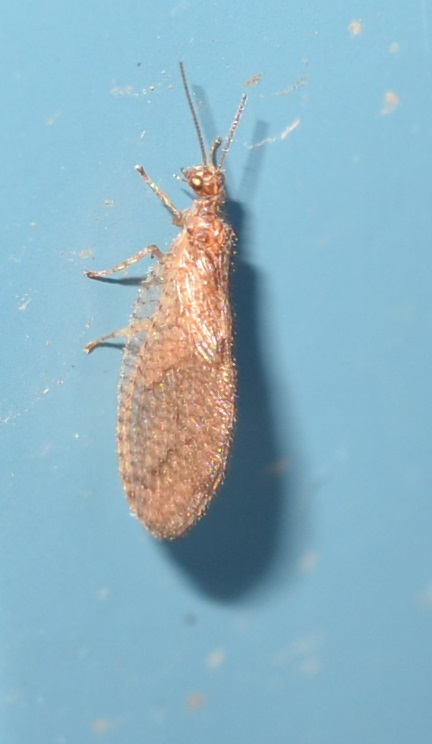

NOW for some drama. I found this beetle, rather weevil (one of the so-called snout beetles) on the side of the shed, and since
have found several individualss, about one a day. I asked our resident tree guru if this [northern pine weevil] was the one causing so much
havoc elsewhere, but he said that is the WHITE pine weevil. The next night I saw this spider packaging up an insect at least the size of the
spider, and when the spider moved off for a moment, I could see that the prey was actually one of those northern pine beetles.
Can you spot the resemblance between the fancy snout of the prey and that of the pine weevil? The weevil is sort of reclining
on its back, so the snout is on the upper right. Unlike our pictured weevil, the prey in this case has two sort of right-angle
twigs comeing out of its schnozz. Anyway, two days later, here is
what is left of the well-wrapped beetle.
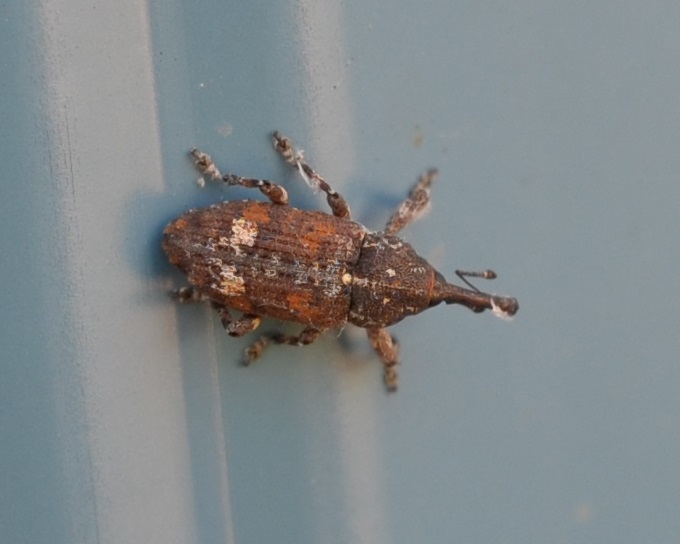
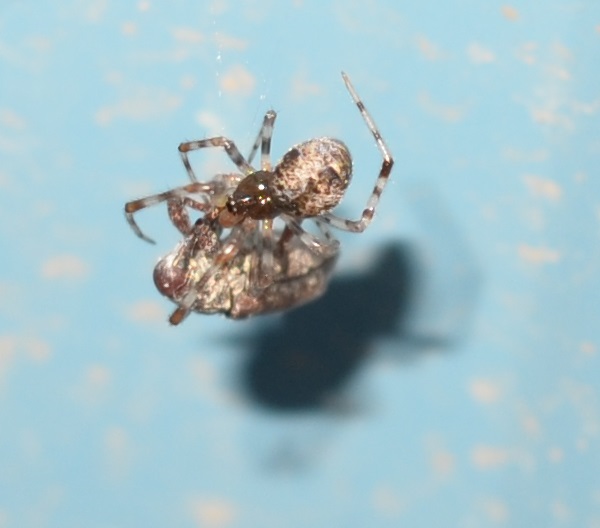
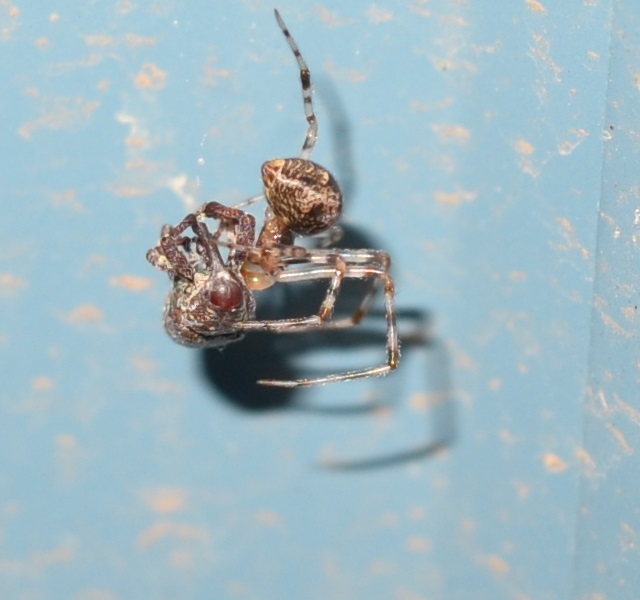

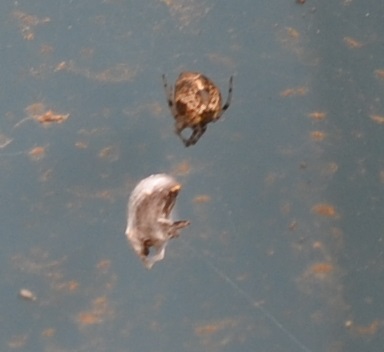
Now for some real color. Last week you met the northern crab spider. This week one appeared with a color change. The crab spiders
are sort of the chameleons of the insect world, and this one is a pretty yellow. Right beside it was this velvety red spider, which
turns out to be a velvet mite. Not the pesky red spider mites, who come in such numbers and ruin things like mint and japanese anemones.
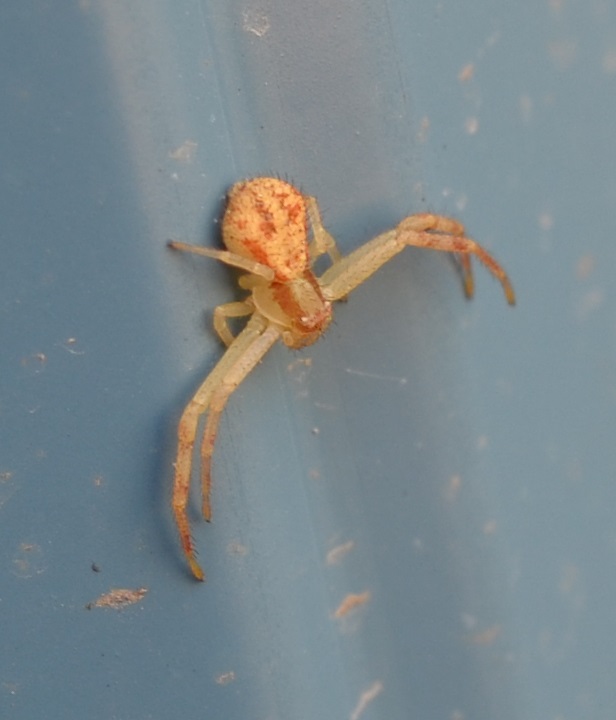

Oh my! I was running into the kitchen and there very near the door handle was this magnificent fishing spider. As its name indicates,
this spider likes an aquatic environment (like my tiny pond? ), where it will sail about and eat small creatures on the water's surface.
As you can imagine, that is going to be bad news when it gets to the pond, where this year's crop of water striders is burgeoning.
They are very hard to photograph as they are always moving, and seem quite camera shy. Here is one - if you don't see them at first,
you will be impressed by the little round surface-tension pads (you usually see only 4 out of six)below their feet give them away. Now this one fellow had leapt on the back of a female and suddenly
the number of round paddies seems to double. Can you see what looks like two silverish streaks next to a pattern of at least 8 paddy shadows? That's how you know there are two there in one place. I apologize for the quality of the picture,
but in fact as I was scooping algae from the surface I managed to catch unharmed one of the striders and he just had to pose
for his mug shot.
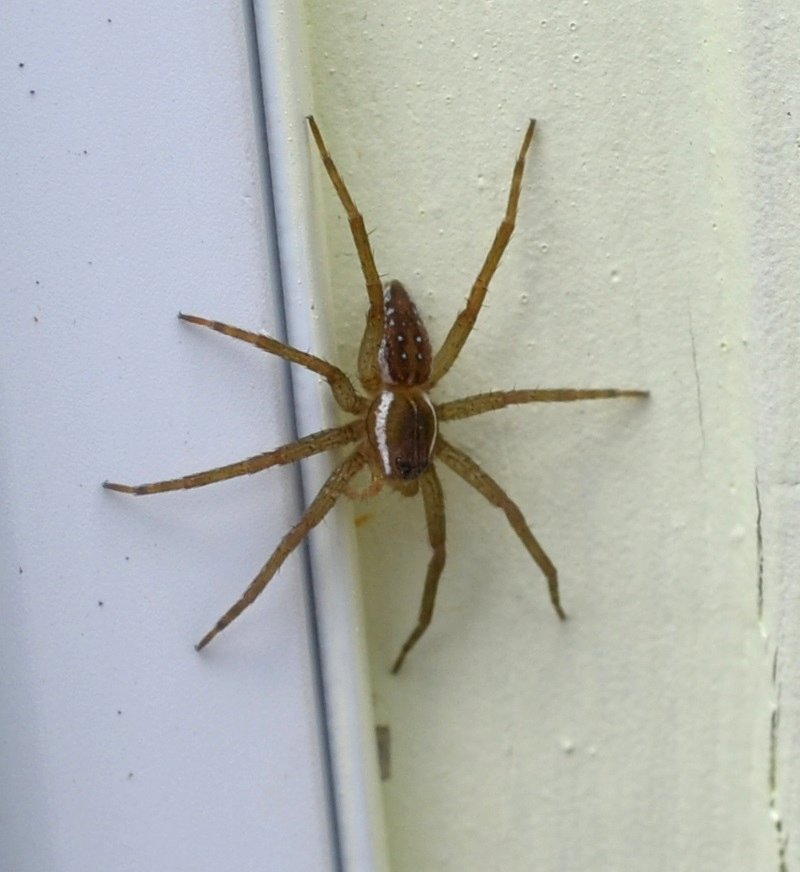

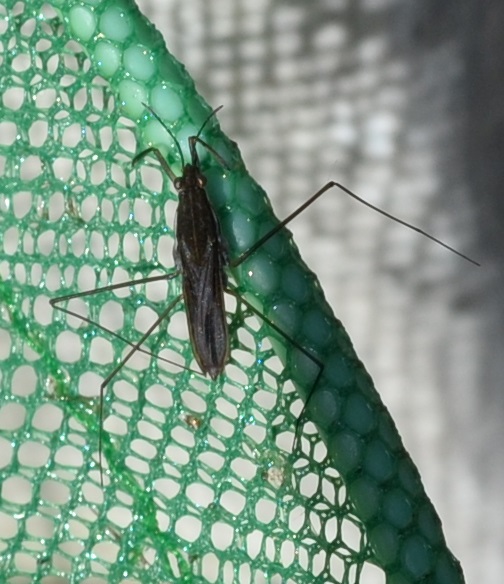
A little more on the amazing long-jawed spider. I've now found six babies total on the wall. They will have to vie for
position in the asters which will grow over the pond. They are just starting to show bits of green. So no pictures of little long-jaws
this week unless you cry out for them. Instead, here is another kind of crab spider with extra-long legs.
All my pictures of this spider were terrible until evening when the flash kicked in. The abdomen (up) seems to have a
kind of strange face, as you might have noticed on the face of the yellow northern crab. His head (down)is strangly decorated but I
think that is an artifact of coloration pattern. Oh yes, there is one spider who seems to enjoy wrapping up pillbugs (sowbugs, roly-polies -
that little thing that
is so reminiscent of a trilobite, it rolls itself up into a ball and rolls away from perceived predators.) They are then left around and
things quite other than the artist seem to wander in and have a snack. This one was almost empty but in the twilight a damselbug
came along and had a snack using its long proboscis as a straw.

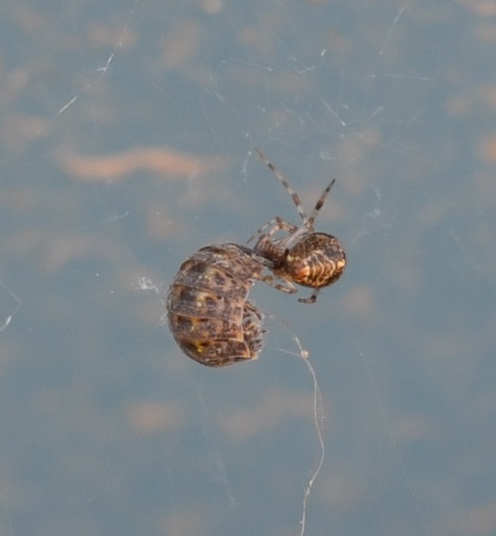
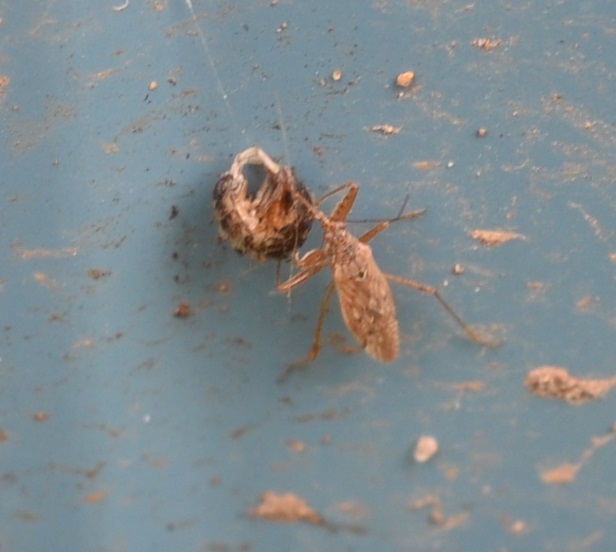
I think we've actually touched on most of the week's excitement. I'll just see you out the door past a few interesting things.
Here are some of the first primroses to bloom. And a pulmonaria with a big fat bumblebee enjoying it. The pulmonaria is
one of my favorite early flowers. I don't know where it got the name (alternatively lungwort), maybe it was a cure for bad lungs.
What I like so much about them is that the flowers come out blue and turn purplish, then pink, as they age. I could
have it wrong - I'm blue-pink dyslexic, you know.

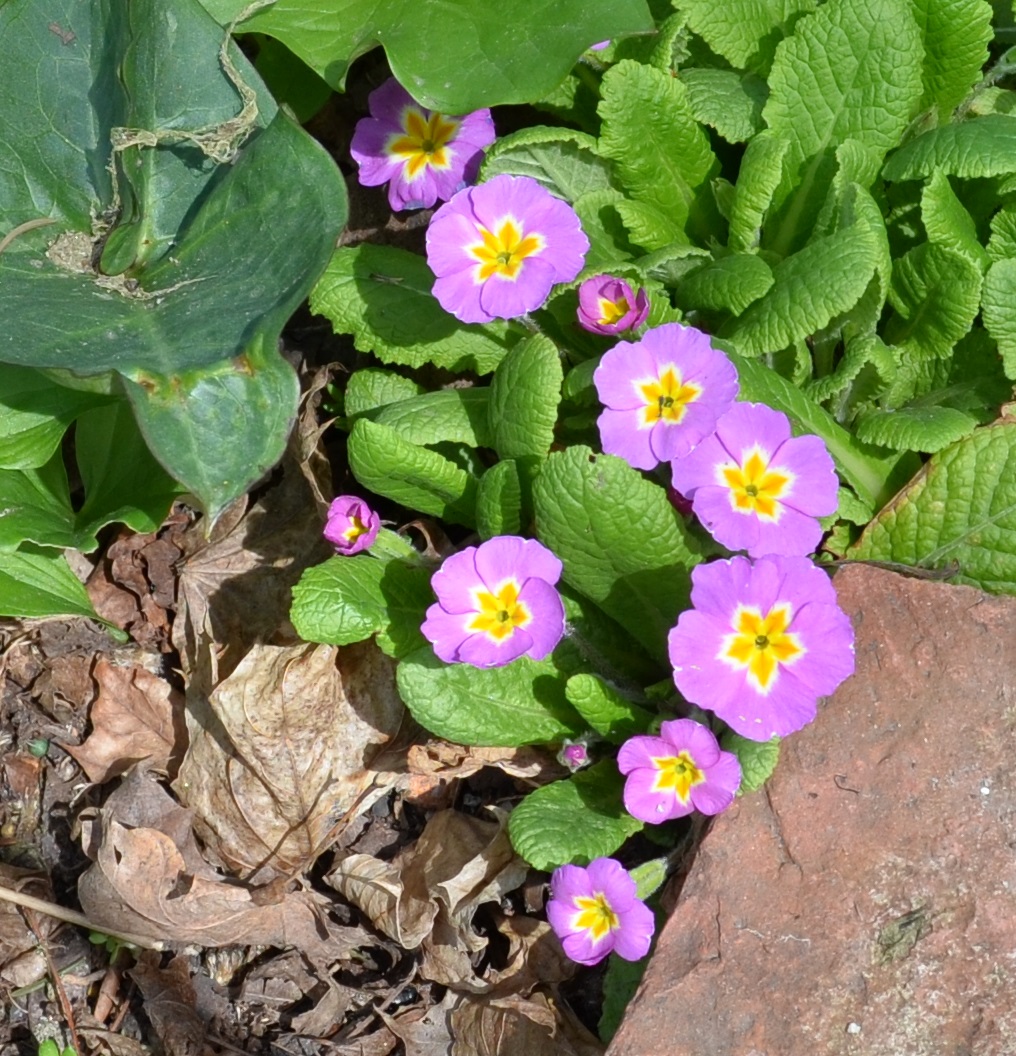
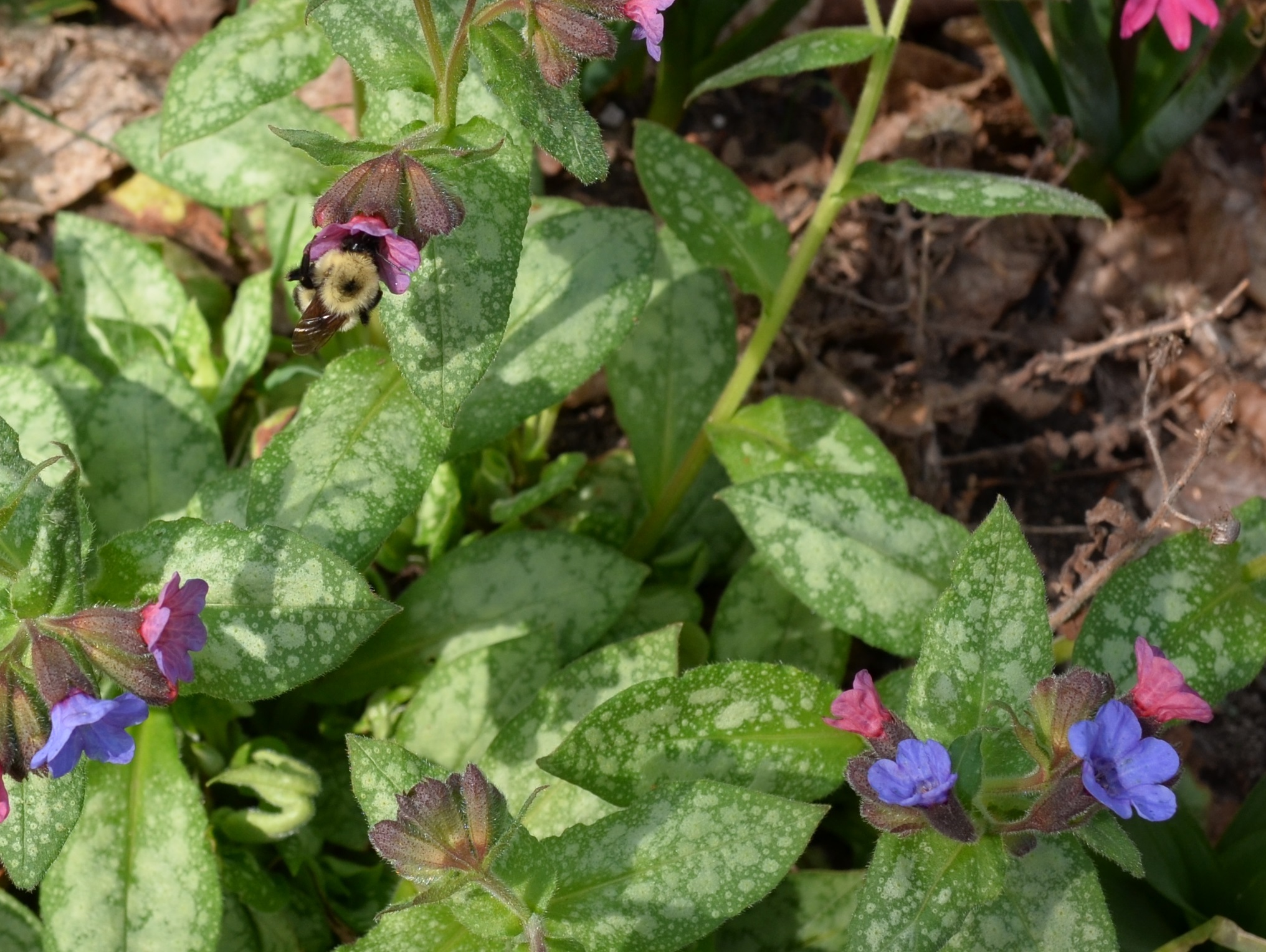
Speaking of puzzles, last week's blog contained at least two errors, or as we say conundra. One: the wolf spider does NOT have a distinctive
whistle, though they may be the ones that stridulate. Two: from what I've read, the bees don't really enjoy each other's company very much.
I'm always accused of giving out too much information, but you can look this up for yourselves.
See you in a few days!
Back to April 14
On to April 28
Back to 2015 menu
Back to main menu


 cin
cin



 cin
cin






















